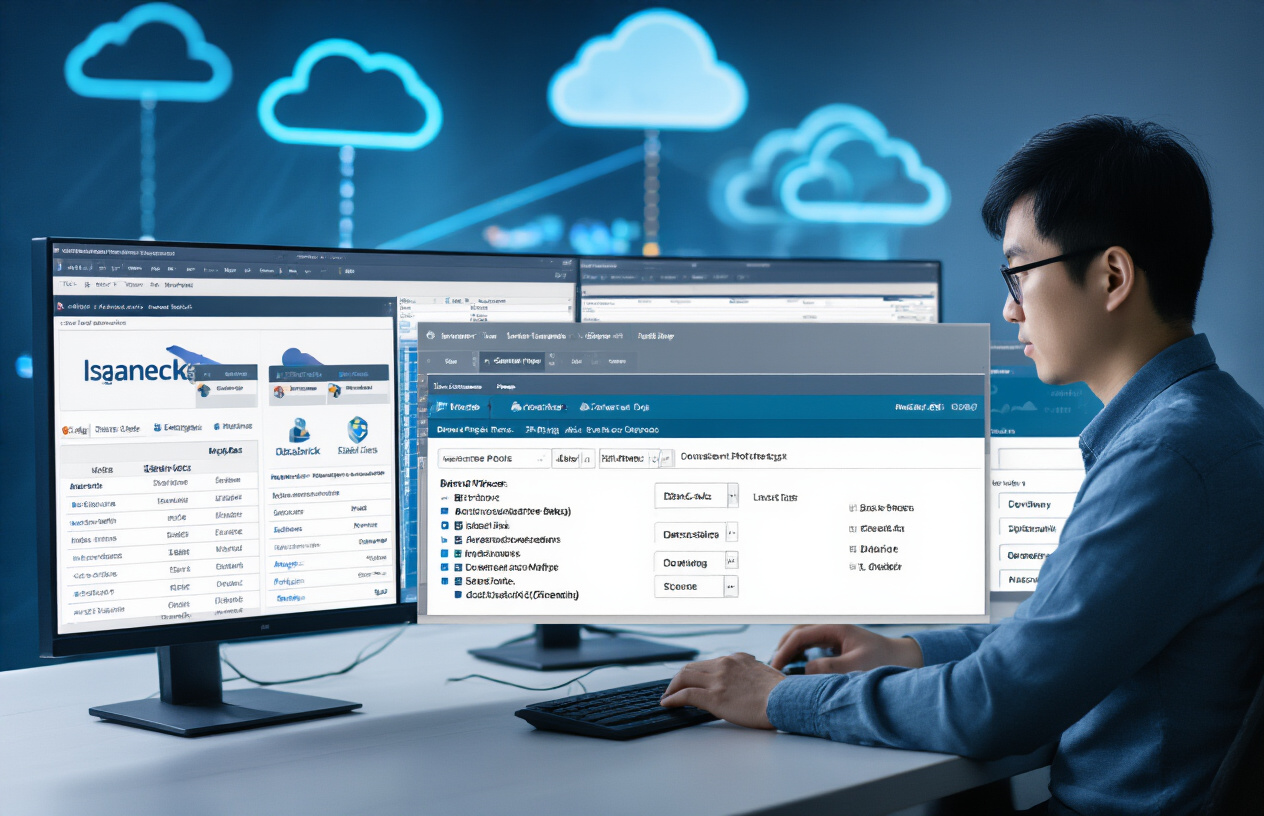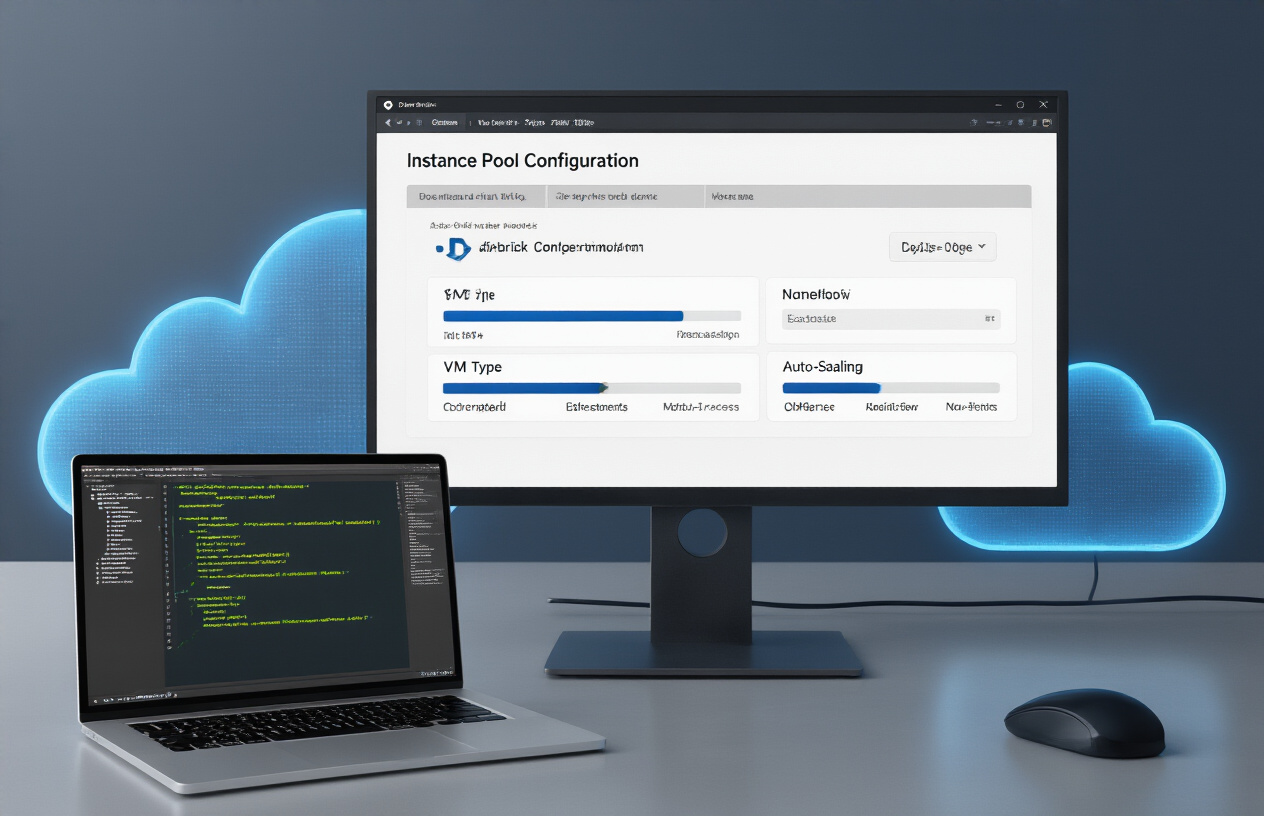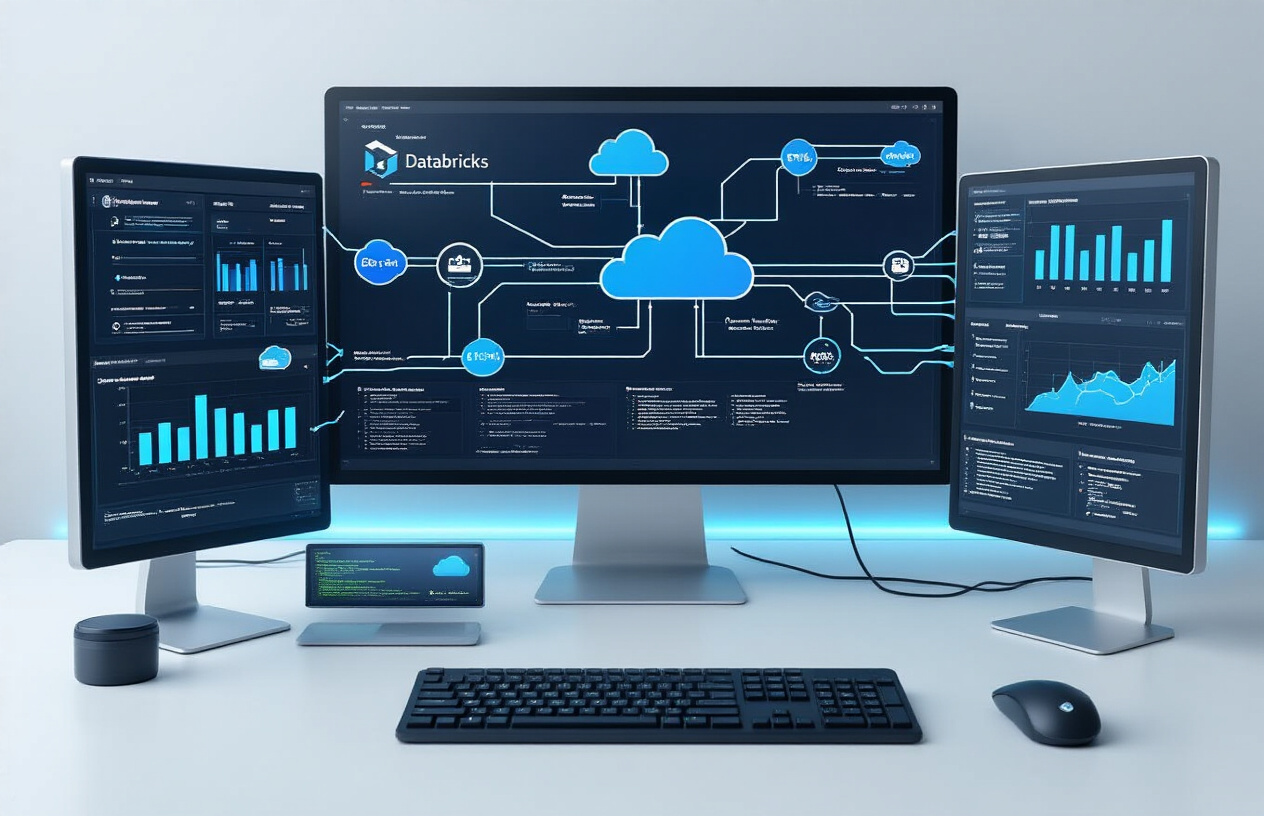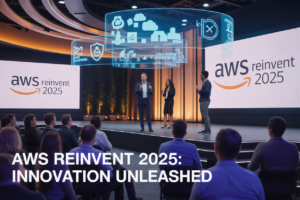Efficiently managing Databricks instance pools helps data engineers and platform administrators reduce cluster start times and control cloud costs. This guide covers practical strategies for optimizing your Databricks environment through effective instance pool configurations. We’ll explore how to set up pools with the right VM types, implement auto-scaling policies that balance performance and cost, and integrate instance pools with your existing Databricks workflows.
Understanding Instance Pools in Databricks

Key benefits of using instance pools
Ever been stuck waiting for your Databricks cluster to spin up? It’s like watching paint dry. Instance pools change that game completely.
With instance pools, your clusters launch in about 60 seconds instead of the typical 5-10 minutes. That’s not just convenient—it’s a productivity multiplier for your data team.
The main perks? First, you’re not constantly rebuilding environments. The instances are pre-initialized with your Databricks runtime, so they’re ready to rock when you need them.
Second, you’ll slash those annoying cluster start times. When everyone’s waiting on results, those minutes matter.
Third, your team can share the same pool across multiple workloads without stepping on each other’s toes. One pool, many clusters—simple.
How instance pools differ from on-demand instances
On-demand instances are like hailing a taxi in the rain—you get what you get, when you can get it. Instance pools are your private fleet waiting in the garage.
| On-Demand Instances | Instance Pools |
|---|---|
| Start from scratch each time | Pre-initialized and waiting |
| 5-10 minute startup times | ~60 second startup times |
| Pay only when actively used | Pay for idle capacity in the pool |
| Unpredictable availability | Guaranteed resource access |
| Separate for each workload | Can be shared across workloads |
The big difference is preparedness versus spontaneity. One saves time, the other might save some cash—if you time it right.
Cost optimization opportunities with proper configuration
Smart instance pool configuration can actually save you serious money. Crazy, right?
The trick is matching pool size to your actual needs. Too big, and you’re paying for machines collecting digital dust. Too small, and you’re back to waiting for resources.
Idle timeouts are your best friend here. Set them to automatically release instances when they’ve been sitting unused for a while. Why pay for compute nobody’s computing with?
Mix in some instance types for different workloads. Heavy ML training? Beef up with GPU instances. Simple data prep? Lighter instances will do fine.
And don’t overlook spot instances for non-critical workloads. They’re dirt cheap but can disappear without warning—perfect for jobs that can handle interruption.
The real power move? Schedule your pools to match your team’s working hours. No point having instances ready at 3 AM unless you’ve got engineers pulling all-nighters.
Setting Up Optimal Instance Pool Configurations

A. Selecting the right instance types for your workloads
Picking the right instance types in Databricks isn’t just about performance—it’s about saving serious cash while keeping your data engineers happy.
Think about your workload patterns. Are you running memory-intensive ML training? Go for memory-optimized instances. Crunching through massive ETL jobs? Compute-optimized instances will be your best friend.
Here’s a quick breakdown to make your life easier:
| Workload Type | Recommended Instance Types | Why It Works |
|---|---|---|
| Standard ETL | Standard (DS3_v2, DS4_v2) | Balanced CPU/memory ratio, cost-effective |
| ML Training | Memory-optimized (E8s_v3, E16s_v3) | Extra RAM for model caching |
| Heavy Transformations | Compute-optimized (F8s, F16s) | Higher CPU power for processing |
| Production Jobs | Storage-optimized (L8s, L16s) | Better I/O for frequent disk operations |
Don’t just go for the biggest, baddest instances by default. I’ve seen teams waste thousands on over-provisioned clusters that spend most of their time idle.
B. Determining appropriate pool sizes
Pool sizing is tricky. Too small and your jobs queue up. Too large and you’re basically burning money.
Start with this formula: (Average concurrent workloads × peak instances per workload) + 20% buffer.
Monitor your actual usage for two weeks, then adjust. Most teams I’ve worked with find their sweet spot between 10-30 instances for medium workloads.
Remember—your minimum pool size should cover your baseline workload to avoid constant scaling events.
C. Configuring idle instance termination policies
The secret to cost-efficient pools? Smart timeout settings.
Don’t use the default 60-minute idle timeout. That’s way too long for most workloads. I’ve found 15-30 minutes works better for balancing availability with cost.
Consider using different timeouts based on time of day:
- Business hours: 30 minutes
- Nights/weekends: 10 minutes
For dev environments, be aggressive with timeouts (5-10 minutes). For prod environments where speed matters more, you can afford longer timeouts.
D. Setting up availability zone distribution
Don’t put all your instances in one AZ. Seriously.
Configure your instance pools to spread across multiple availability zones to protect against those inevitable AWS/Azure zone outages.
In AWS, set up your pool to use at least three AZs. In Azure, enable zone redundancy for critical workloads.
For multi-region setups, consider separate pools per region rather than cross-region pools to reduce latency issues and data transfer costs.
Remember that spreading across zones might increase inter-node communication costs slightly, but the reliability benefits far outweigh this minor expense.
Advanced Instance Pool Management Strategies

Implementing auto-scaling for varying workloads
Running the same instance pool size 24/7 is like paying for a party venue that can fit 100 people when sometimes only 10 show up. Wasteful, right?
Auto-scaling changes everything. Set minimum nodes to handle your baseline workload and maximum nodes for peak demands. Your pool expands when teams are hammering the system and shrinks when demand drops.
The magic happens in the idle timeout settings. Start with 20-30 minutes and adjust based on your usage patterns. Too short, and you’ll waste time spinning instances up and down. Too long, and you’re burning money on idle resources.
idle_instance_autotermination_minutes = 30
A real game-changer? Schedule-based auto-scaling. Configure your pools to beef up before your data scientists arrive in the morning or before nightly ETL jobs kick off.
Creating specialized pools for different workload types
Not all workloads are created equal. Your ML training jobs might need GPU-equipped powerhouses while your data analysts could get by with CPU-optimized instances.
Here’s what specialized pools might look like:
| Pool Type | Instance Type | Min/Max Nodes | Ideal Workloads |
|---|---|---|---|
| Analytics | Standard_D4s_v3 | 2/10 | SQL queries, notebooks |
| ML Training | Standard_NC6s_v3 | 0/4 | Deep learning, model training |
| ETL | Standard_E8s_v3 | 1/8 | Data processing pipelines |
Don’t make the rookie mistake of using a single pool type for everything. Your finance team will thank you.
Balancing cost and performance considerations
Finding the sweet spot between performance and cost isn’t rocket science, but it does require some finesse.
Spot instances can slash your costs by 60-80% compared to on-demand pricing. Perfect for non-critical workloads that can handle interruptions. Just set a fallback to on-demand instances when spots aren’t available.
Reservations are your friend for predictable, baseline workloads. If you know you’ll need at least 10 instances running 24/7, reserved instances will save you a bundle.
Monitor your instance pool utilization religiously. Databricks provides metrics on pool usage – use them! When utilization consistently tops 80%, it’s time to expand. Below 40%? You’re probably over-provisioned.
The cost savings add up quickly. One enterprise team I worked with saved $15,000 monthly just by right-sizing their instance pools and implementing proper auto-scaling rules.
Monitoring and Maintaining Instance Pools

Key metrics to track for pool performance
Ever notice how a poorly configured instance pool can tank your entire Databricks operation? Start watching these metrics and you’ll spot issues before they become disasters:
- Idle Capacity: How many instances are sitting around doing nothing? Too many means wasted money.
- Pool Utilization Rate: Are you using 20% or 90% of your pool? This tells you if you’re right-sized.
- Wait Time: How long clusters sit in “pending” state before getting instances from the pool.
- Scaling Events: Frequency of scaling up or down – too many might indicate instability.
- Cost per Compute Hour: Track this against workload completion times to gauge efficiency.
Setting up alerts for pool utilization
Nobody wants to stare at dashboards all day. Set these alerts and sleep better:
# Example alert configuration
{
"metric": "pool_utilization",
"threshold": 85,
"operator": "greater_than",
"duration_minutes": 30,
"action": "notify_admin_group"
}
Solid alert thresholds to consider:
- High utilization (>85% for 30+ minutes)
- Low utilization (<20% for several hours)
- Excessive wait times (>2 minutes)
- Cost spikes (>20% increase week-over-week)
Implementing regular maintenance routines
Monthly maintenance keeps your instance pools humming:
- Refresh instance pools to get latest VM images and security patches
- Review and adjust pool sizes based on historical usage patterns
- Update instance types to leverage new/cheaper options
- Clean up abandoned pools from completed projects
- Validate pool permissions against current team roster
The best admins schedule this as a recurring calendar event with automated runbooks.
Detecting and resolving pool bottlenecks
Pool bottlenecks aren’t always obvious. Common culprits include:
- Resource Contention: Multiple high-demand workloads fighting for the same instances
- Instance Type Limitations: Some workloads need beefier instances than your pool provides
- Availability Zone Issues: AWS/Azure zone problems can limit instance availability
- Quota Limits: Hitting cloud provider limits on specific instance types
Fix these by segregating workloads across dedicated pools, using instance type diversity, and implementing retry logic with backoff.
Auditing pool usage across teams
Pool sprawl is real. Teams create pools and forget about them. Implement these auditing practices:
- Generate weekly reports showing pool ownership and utilization by team
- Tag pools with project codes and expiration dates
- Implement chargeback models so teams see the actual cost of their pools
- Conduct quarterly reviews to consolidate similar pools
- Create a pool request process with justification requirements
Many organizations find 30-40% cost savings through regular pool audits.
Security and Compliance for Instance Pools

Implementing proper access controls
Security isn’t just a checkbox—it’s a fundamental aspect of managing instance pools in Databricks. When multiple teams share resources, proper access controls become crucial.
Start by implementing role-based access control (RBAC) for your instance pools. This isn’t complicated—simply assign specific permissions to different user groups based on their job functions. Your data scientists might need to use pools but not create them, while your platform engineers need full administrative access.
Here’s a quick breakdown of recommended access levels:
| Role | Create Pools | Edit Pools | Use Pools | Delete Pools |
|---|---|---|---|---|
| Admin | ✓ | ✓ | ✓ | ✓ |
| Platform Engineer | ✓ | ✓ | ✓ | ✗ |
| Data Scientist | ✗ | ✗ | ✓ | ✗ |
| Analyst | ✗ | ✗ | ✓ | ✗ |
Don’t forget to regularly audit these permissions. Teams change, people move around, and suddenly that intern from last summer still has admin access to your production pools.
Network security considerations
Your instance pools aren’t islands. They connect to various data sources, often containing sensitive information.
First thing’s first: always deploy instance pools within private VPCs. This gives you a secure boundary and prevents unwanted access from the public internet.
Make use of security groups to control traffic between your instance pools and other resources. Tight network policies mean fewer potential attack vectors.
Ever considered the risk of data exfiltration? Configure your outbound network rules to allow connections only to approved destinations. This simple step prevents compromised instances from sending your precious data to places it shouldn’t go.
Compliance requirements for sensitive workloads
Running regulated workloads on Databricks? Your instance pools need special attention.
For HIPAA or PCI-DSS compliance, instance pools must be configured to encrypt data at rest and in transit. No exceptions here. Enable disk encryption for all pool instances and verify TLS for all connections.
Some compliance frameworks require isolation. In these cases, dedicate specific instance pools exclusively for regulated workloads rather than sharing them with non-regulated jobs. Yes, it might cost a bit more, but the alternative—failing an audit—costs way more.
Document everything about your instance pool configuration. Compliance auditors love documentation, and future-you will thank present-you when that surprise audit comes around.
Also, remember that auto-termination settings can help minimize the exposure window of sensitive data. The less time your instances run, the smaller your attack surface.
Integration with Databricks Workflows

A. Connecting instance pools with job clusters
Ever tried running a critical job only to wait ages for the cluster to spin up? That’s where instance pools shine with job clusters.
When you connect an instance pool to your Databricks job clusters, you’re essentially keeping a fleet of instances warmed up and ready to go. No more twiddling your thumbs waiting for cluster initialization—your jobs start almost instantly.
The setup is surprisingly simple:
- Create your instance pool with the right VM types
- When configuring your job cluster, select your pool from the dropdown
- Watch your job execution times drop dramatically
One customer slashed their pipeline start times from 8-10 minutes down to just 30 seconds. That’s not just faster—it’s transformative for SLAs.
"job_cluster": {
"instance_pool_id": "0101-120000-brick9-pool-ABCD1234",
"node_type_id": "Standard_D4s_v3",
"driver_node_type_id": "Standard_D8s_v3"
}
B. Optimizing pools for interactive notebooks
Interactive notebook sessions have totally different needs than scheduled jobs. Your data scientists need responsive environments that don’t disappear mid-analysis.
For notebook-focused pools:
- Configure longer idle timeout periods (30+ minutes recommended)
- Set minimum idle instances higher (3-5 works well for most teams)
- Use instance types with balanced CPU/memory ratios
The magic happens when you match pool settings to your team’s work patterns. Early birds? Schedule auto-scaling to begin before they log in. Global team? Keep a minimum capacity 24/7.
C. Using pools with Databricks SQL
Databricks SQL warehouses love instance pools. The instant-on nature of pool-backed SQL warehouses means your analysts get query results back faster, not excuses about “the cluster is starting.”
For SQL-optimized pools:
- Pick memory-optimized instances (analysts typically need more RAM than CPU)
- Set aggressive auto-termination (SQL queries are typically shorter-lived)
- Configure spot instance fallback for non-critical queries
A properly configured SQL instance pool can support 50+ concurrent users while maintaining sub-second query start times. That’s the difference between an analytics platform people tolerate and one they absolutely love.

Effectively managing instance pools in Databricks is crucial for optimizing performance, controlling costs, and ensuring scalability in your data engineering and analytics workflows. From setting up optimal configurations to implementing advanced management strategies, the right approach to instance pools can significantly enhance your Databricks experience. Monitoring usage patterns, maintaining security compliance, and seamlessly integrating with Databricks workflows all contribute to a robust instance pool management strategy.
As you implement these best practices in your organization, remember that instance pool management is not a one-time setup but an ongoing process that requires regular evaluation and adjustment. Start by implementing basic configurations, then gradually incorporate advanced strategies as you become more familiar with your workload patterns. By following these guidelines, you’ll be well-positioned to maximize the efficiency of your Databricks environment while maintaining control over resource utilization and costs.




















